It’s a short boat ride from Grand Cayman to Jamaica, but it involves a time change. We set our clocks back an hour before going to bed. It’s always nice to get an extra hour, but time is a relative thing.
We arrived in Falmouth as the sun was rising on what would be a hot sunny day. And lo and behold, there were mountains and jungles rising from the sea. This place wasn’t going to wash away.
I had been to Jamaica several times before, but never by cruise ship, and never to Falmouth.
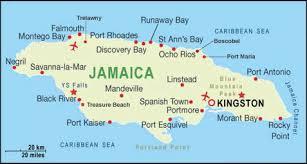 Falmouth sits at the edge of a splendid deep water harbor on the north side of Jamaica. It isn’t on most travel itineraries because its beaches are nothing to write home about and its neighbors Montego Bay and Ocho Rios are the happening Rasta party places to visit, with resorts and all the cool beach amenities.
Falmouth sits at the edge of a splendid deep water harbor on the north side of Jamaica. It isn’t on most travel itineraries because its beaches are nothing to write home about and its neighbors Montego Bay and Ocho Rios are the happening Rasta party places to visit, with resorts and all the cool beach amenities.
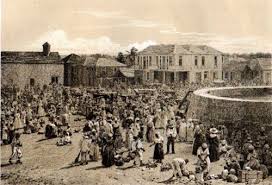 But that was not always the case. Falmouth was one of the busiest ports in the world during the 18th and 19th
But that was not always the case. Falmouth was one of the busiest ports in the world during the 18th and 19th
centuries. Europeans, mostly Englishmen, made vast sums of money growing sugar cane and turning it into rum, on the backs of an army of slaves. Some of the richest men on the planet called Falmouth home and it had a public water system before New York City. Its Georgian-style mansions were known far and wide. And many of these Great Houses are still standing in all of their former glory.
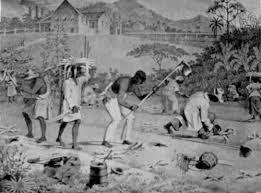 In addition to the obvious fact that no person should own another, the dynamics of slavery makes it an impossible system to maintain. As with American slavery, there were many more slaves than masters, making it a very dangerous business indeed. It is a little known fact that there were slave revolts taking place constantly all over the American South, starting back in Colonial times. And it was the same in Jamaica where there were eighteen major uprisings between 1655 and 1823. By the 1820’s, almost 3,000 slaves were escaping each year.
In addition to the obvious fact that no person should own another, the dynamics of slavery makes it an impossible system to maintain. As with American slavery, there were many more slaves than masters, making it a very dangerous business indeed. It is a little known fact that there were slave revolts taking place constantly all over the American South, starting back in Colonial times. And it was the same in Jamaica where there were eighteen major uprisings between 1655 and 1823. By the 1820’s, almost 3,000 slaves were escaping each year.
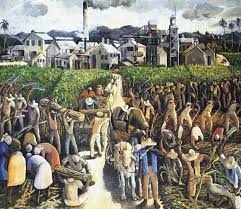 In 1831, the whole powder keg exploded. It started with a general strike led by a man named Samuel Sharpe, but it soon spun out of control and culminated with the torching of over 200 plantations and the cane-filled warehouses of Falmouth.
In 1831, the whole powder keg exploded. It started with a general strike led by a man named Samuel Sharpe, but it soon spun out of control and culminated with the torching of over 200 plantations and the cane-filled warehouses of Falmouth.
The British army spent a month restoring order and rounding up the slave leaders, including Sharpe, who were publicly hanged as a lesson to others. But the real lesson was being learned back in England, where the public was sickened by the savage stories coming out of Jamaica and the rest of the West Indies.

Slavery was outlawed in 1840, the slaves freed, and the bottom soon dropped out the Jamaican sugar cane empire. And with it went Falmouth.
Until 2007, when Royal Caribbean announced that it was going to build a new terminal for its ships at Falmouth.
Doreen Hemlock, a business reporter who visited Falmouth during its initial stage, offered the following analysis of the proposal.

“Royal Caribbean worked with an Orlando design company, to reflect the character of the town in its new port area. Buildings were designed as a modern extension of the town, on the same grid, in a similar Georgian architectural style. The cruise line also is working with the town to support its efforts at historic preservation.”
For what happened next, we need only look at how gambling has played out on American Indian reservations. The traditionalists warn that it will spell the end of their culture and the natives will be swallowed by creeping capitalism. The moneyed interests dangle the promise of countless wealth to a downtrodden people. Ultimately, the Jamaican government approved the project, the RC terminal opened in 2011 to much hoopla, and the verdict is still out on whether the gambit has paid off.
 The new terminal at Falmouth is story book pretty. The old warehouses have been completely restored, crowned with lovely red roofs.
The new terminal at Falmouth is story book pretty. The old warehouses have been completely restored, crowned with lovely red roofs.
As I stared down from my walking track perch on Deck 11 at the bustling scene below, the vendors setting up shop wearing brightly-colored puffy shirts and calico dresses, it looked almost like a movie set. Behind the terminal sat the town, its historic houses and churches shining brightly in the morning sun.

But as with all fairy tales, there was a dark side where the shanty town market clung to the eastern edge of Falmouth like an ugly wound. More on this a bit later.
After breakfast we loaded our day packs and navigated the ever changing departure maze on the ship. It seemed like every day the departure gangway was located in a slightly different location. And some decks have bulkheads that block your path. On the Navigator, we needed to go down to Deck 5, walk across the Royal Promenade, take an elevator to Deck 2, and then look for the exit. As we grabbed some fruit at the snack bar the Captain was delivering his daily message over the ship intercom. He told us that we had from 8-5 to see the sights, to enjoy our brief stay on the island of Jamaica, and to steer clear of anyone trying to sell us weed.
 We were hoping to take a historic walking tour in the afternoon, checking out what was supposedly the largest collection of Georgian architecture in the Caribbean. My research had highlighted the Town Hall and Court House, Barrett Wharf House, Tharp House, the Pottery House, Vermont House, St Peter's Anglican Church and the William Knibb Baptist Church. Everything seemed to be within easy walking distance of the dock.
We were hoping to take a historic walking tour in the afternoon, checking out what was supposedly the largest collection of Georgian architecture in the Caribbean. My research had highlighted the Town Hall and Court House, Barrett Wharf House, Tharp House, the Pottery House, Vermont House, St Peter's Anglican Church and the William Knibb Baptist Church. Everything seemed to be within easy walking distance of the dock.
 The inside of the warehouse terminal was all red brick and fresh paint with the usual shopping venues selling shiny objects. Workers were putting the finishing touches on a Margaritaville, which apparently is the Caribbean equivalent of McDonalds. Jimmy Buffett certainly has come a long way from his peanut butter-stealing days down at the Mini-Mart.
The inside of the warehouse terminal was all red brick and fresh paint with the usual shopping venues selling shiny objects. Workers were putting the finishing touches on a Margaritaville, which apparently is the Caribbean equivalent of McDonalds. Jimmy Buffett certainly has come a long way from his peanut butter-stealing days down at the Mini-Mart.
Speaking of McDonalds, it turns out they aren't very popular with the locals who don't go in much for burgers. They prefer chicken and the Colonel’s KFC’s are everywhere and quite popular.
Once again, we had a plan. Find the Taxi Station at the end of the sprawling terminal and catch a taxi or bus to Doctor's Cave Beach beach, about 20 miles to the west, and spend a few hours swimming and snorkeling. Dave’s Cave is listed in all the tour guides as a must see. Then we would hop a ride or walk back to the Hip Strip at Montego Bay for some Reggae gear shopping before heading back to Falmouth for a history lesson.
As usual, our plans went awry when we started talking to the local guides. In this case, a very nice young man pulled up in a large electric golf cart and took us to the end of the terminal and explained that he could get us great tour of the north side of the island.
The guides are all licensed by the Jamaican Tourist Bureau, so you really can’t get ripped off. But
 choosing a tour from a stranger is always a crap shoot. Some work out great and others leave you less than satisfied. In this case, we ended up paying $35 per person for an all day van tour with BARBARA who drove for Maxi Tours.
choosing a tour from a stranger is always a crap shoot. Some work out great and others leave you less than satisfied. In this case, we ended up paying $35 per person for an all day van tour with BARBARA who drove for Maxi Tours.
Barbara was a sassy Jamaican who was both funny and no-nonsense at the same time. She spoke with a sweet Jamaican patois that sounded almost musical. And she knew the north side of the island like the back of her hand. She lives in Montego Bay and takes a public bus to Falmouth, leads the daily tour, and then catches the bus home.
If you want a tour that you will long remember, shoot her an e-mail at:
barbara.panthan@yahoo.com
You will be glad you did.
We headed west along the coast toward Montego Bay and Barbara pointed out interesting sites along the way.

“See that school over there? Dat's where the track star Usain Bolt went to grade school.”
We inquired about the cost of land.
“You can buy a plot of undeveloped ground for around $3,000 US or $300,000 Jamaican. And there definitely is undeveloped land for sale.”
“The Spanish are building lots of hotels,” she remarked as we passed a posh Mediterranean villa complex along a stretch of rocky coastline.

Inna enquired if there was a national dish.
Barbara said that indeed there was. “A native fruit called Akee and cod.”
Barbara gave us a little lesson in politics at my request.
Jamaica has been a sovereign nation since 1962 and celebrates its Independence Day on August 6. There are 14 parishes with 4 council members from Jamaica Labor Party and People's National Party representing each parish. Jamaica currently has a lady Prime Minister from the PNP which tends to be more pro-people – hence the name.
The one thing you notice right away is that every house, not matter the size or cost, is constructed solidly out of rebar and concrete to withstand hurricane winds and rain. And almost every house is fenced in. We were left to solve that riddle on our own.
There were large cleanup crews picking up trash along the dual highway that was built for the World Cricket Cup in 2007. It seemed to be a major source of employment.
Gas is expensive in Jamaica. And the price is pegged to the American economy, which is a double-edge sword. As the U.S. economy weakens, gas prices drop, but then, so do the tourist dollars.
Our first stop was the historic Rose Hall Plantation, the infamous home of Annie Palmer, the White Witch Voodoo Queen, whose ghost supposedly haunts the solitary Georgian mansion that sits atop a hillside overlooking the sea.
The story of Rose Hall is one of those tales that transcends history and is shrouded in mystery. Some say it’s total crap and others say they have witnessed Annie’s ghost.
Barbara drove us up the winding drive to the plantation where we paid our $15 entrance fee and were met by a young Jamaican girl in period costume, who led us around the mansion and told us the rest of the story.
In 1750, George Ash, an Englishman with deep pockets purchased Rose Hall, encompassing 6000 acres of volcanic-rich soils tended by 2000 slaves.
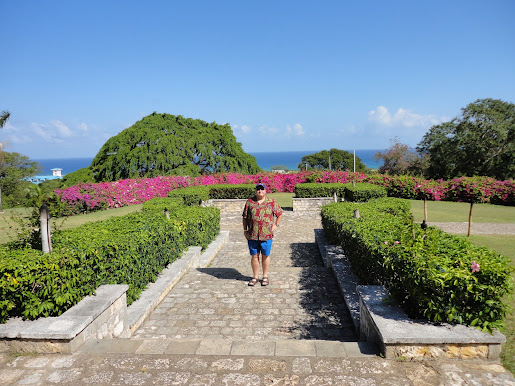
Ash later sold the estate to John Palmer, another wealthy Englishman, who soon married Annie, whose parents had emigrated to Haiti and then died of yellow fever when she a small child. Annie was raised by a Haitian nanny who taught her witchcraft and voodoo.
After a brief period of marital bliss, Mr. Palmer died under mysterious circumstances – perhaps yellow fever –some said at the hands of Annie. And this pattern was to repeat itself two more times.
 In between murdering her rich husbands, supposedly Annie took great pleasure in torturing her slaves down in the basement dungeon while hosting wild sex orgies, including a torrid affair with her black overseer Takoo, who was also a practitioner of voodoo.
In between murdering her rich husbands, supposedly Annie took great pleasure in torturing her slaves down in the basement dungeon while hosting wild sex orgies, including a torrid affair with her black overseer Takoo, who was also a practitioner of voodoo.
After murdering her last husband, she instructed several of her slaves to haul the shrouded body to the ocean via a network of secret escape tunnels running under the property. After dumping the corpse in the sea, the litter bearers were murdered, hence the old adage, “Dead men tell no tales.”
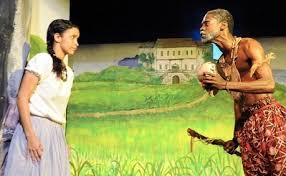 Annie eventually had an affair with a young bookkeeper who she hired to handle the estate’s finances. When her new lover took up with one of the house slaves, Millicent, who was Takoo’s granddaughter, Annie put a voodoo spell on the young girl. Nine days later Millicent died from the curse and in a fit of rage Takoo stole into the house one night and smothered Annie with a pillow as she slept in her bed.
Annie eventually had an affair with a young bookkeeper who she hired to handle the estate’s finances. When her new lover took up with one of the house slaves, Millicent, who was Takoo’s granddaughter, Annie put a voodoo spell on the young girl. Nine days later Millicent died from the curse and in a fit of rage Takoo stole into the house one night and smothered Annie with a pillow as she slept in her bed.
And since that day, Annie’s ghost has haunted the mansion.
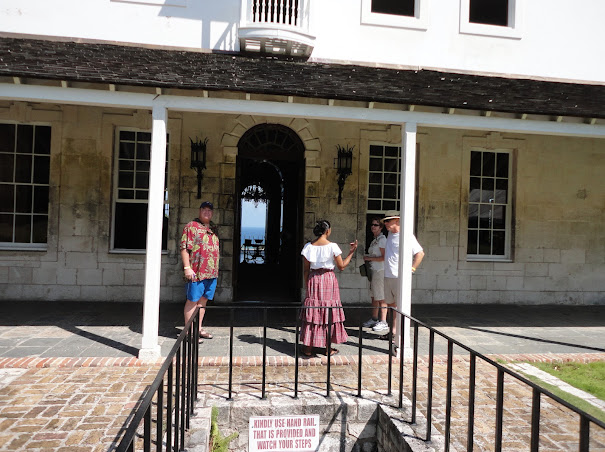 Inside the airy two story house made of Jamaican mahogany there are lovely European antiques and the walls are draped in silk fabric, depicting palms and birds. There is also a very unique grandfather clock given by Johnny Cash who lived nearby at Cinnamon Hill. Johnny was a big fan of Rose Hall and even wrote a song called “The Ballad of Annie Palmer”.
Inside the airy two story house made of Jamaican mahogany there are lovely European antiques and the walls are draped in silk fabric, depicting palms and birds. There is also a very unique grandfather clock given by Johnny Cash who lived nearby at Cinnamon Hill. Johnny was a big fan of Rose Hall and even wrote a song called “The Ballad of Annie Palmer”.


But there are some pretty creepy items there too.
 There’s a picture of Annie with four small children, painting a scene of domestic tranquility. But Annie had no children, so if you look closely, you will see that the children’s heads are fashioned after dolls. But even weirder, the painter utilized a strange technique that gives the impression that Annie’s eyes are following you, no matter where you view the painting.
There’s a picture of Annie with four small children, painting a scene of domestic tranquility. But Annie had no children, so if you look closely, you will see that the children’s heads are fashioned after dolls. But even weirder, the painter utilized a strange technique that gives the impression that Annie’s eyes are following you, no matter where you view the painting.

Bear traps were found down in the dungeon. But there were never any bears on Jamaica. Legend has it that Annie used them on her slaves.

Several cast members of the hit TV show “Love Boat”claim that when they stayed at the mansion, they woke up one morning to the sound of a baby crying, and when they got up to see where the noise was coming from, it suddenly stopped. Upon returning to their room, they found their coffee cups smashed on the floor.
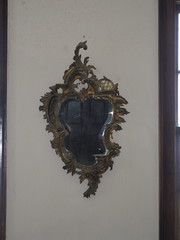 Over the years, several people who have taken pictures in Annie’s bedroom were shocked to see her murky image in the mirror hanging by her bed.
Over the years, several people who have taken pictures in Annie’s bedroom were shocked to see her murky image in the mirror hanging by her bed.
A few years ago, a group of international mystics – whatever the hell that means – visited Rose Hall in order to prove whether Annie's ghost really existed. They focused their attention on the special grave that Takoo had built in order to imprison her spirit. When they tried to channel her ghost, they got nothing. Apparently Takoo and his conspirators had botched the grave, allowing her spirit to escape the tomb. So, maybe she’s real, and maybe she’s not. Who knows?
 But if history is any judge then the following fact is enlightening. During the Christmas rebellion of 1832, 70 of the great houses on Jamaica were burned and only the kind masters' houses were spared. But Rose Hall was not burned out of fear of Annie's ghost.
But if history is any judge then the following fact is enlightening. During the Christmas rebellion of 1832, 70 of the great houses on Jamaica were burned and only the kind masters' houses were spared. But Rose Hall was not burned out of fear of Annie's ghost.
Today, Rose Hall is owned by the Rawlings family from Wilmington, Delaware, and they allow daily tours and are slowly restoring the estate.
We pushed on to Montego Bay, a tip top destination brimming with fancy estates, world-class resorts, golf courses, and shopping malls. We drove by an especially nice golf course called the Half Moon Club where golfers and their caddies strolled manicured fairways as if roaming the grounds of their private estate.

The fanciest of the fanciest neighborhoods is Iron Stone. Barbara took us for a drive around the Iron Stone perimeter and informed us that it is home to many movie stars like Eddie Murphy and Sylvester Stallone. And Prince Charles recently visited friends there touring the Bob Marley Center in 2011.
We continued on toward Montego Bay and soon came to a funky street filled with hippie-dippy shops overflowing with EVERYTHING reggae. This is the Hip Strip.

Barbara found a parking space in front of a gaudy shop and we bailed out of the van. The inside of the crowded store was crammed with all sorts of trinkets decorated in the Jamaican colors of yellow, green and black. Larry and I were looking for a Bob Marley beach towel and they had a selection of about twenty or more. I also picked up a fiery red cotton Hawaiian shirt – except it was Jamaican.
 Then it was back in the van and we were off to our next stop, Richmond Hill, a former plantation Great House built in 1804, overlooking Montego Bay. The estate is now a hotel that is also open to the public for tours and special events, like weddings. We paid our $2 and roamed the manicured grounds and the antique-filled rooms of the mansion.
Then it was back in the van and we were off to our next stop, Richmond Hill, a former plantation Great House built in 1804, overlooking Montego Bay. The estate is now a hotel that is also open to the public for tours and special events, like weddings. We paid our $2 and roamed the manicured grounds and the antique-filled rooms of the mansion.
 Two very friendly Austrian ladies own the place. We talked to them for a few minutes and they invited us to come back for a longer stay. It’s a little far from the beach, but it is very kris – as the Jamaicans are very fond of saying when referring to some place that is very friendly and laid-back.
Two very friendly Austrian ladies own the place. We talked to them for a few minutes and they invited us to come back for a longer stay. It’s a little far from the beach, but it is very kris – as the Jamaicans are very fond of saying when referring to some place that is very friendly and laid-back.
On the way back into Montego Bay Barbara stopped at the Overton Plaza and led us into a small take-out restaurant where she bought us all a local delicacy known as a Jamaican Patty – a flaky pastry filled with spiced beef. They were delicious! We tried to pay her, but she insisted that it was her treat. We couldn’t believe how gracious it was for a lady who really didn’t know us from Adam, and who clearly was struggling to make ends meet, to buy us all lunch.
“Now I take you to my favorite beach,” said Barbara as she finished her patty.
“Dave’s Cave?” I suggested. I knew it was somewhere nearby.
“That’s where all the tourists go,” chuckled Barbara. “I take you to the beach where all de locals go. Where I take my family.”
The Aqua Sol Water Theme Park was rockin’ when we exited Barbara’s van. As Bob Marleys “Get Up, Stand Up” blared from a large amplifier, a young Rasta DJ hopped off a small stage by the blue and yellow restaurant-bar and greeted us with a happy-glazed smile.
 “What are your names and where you from, Mon?” asked the grinning ring master.
“What are your names and where you from, Mon?” asked the grinning ring master.
We gave him our particulars and he jogged back to the stage and announced to all the patrons. “Let’s welcome Steve and Inna from Maryland, and Larry and Teri from Florida.”
 Aqua Sol was a funky mix of all sorts of weird stuff: the MoBay 500, the only Go-Cart racing track in Montego Bay, featuring both single-seat and double-seat Honda carts; tennis and volleyball courts; ping-pong tables and a professionally managed gym; sets of dominoes, ludo and draft which guests are free to use; a children's playground with swings and slides; water trampolines and jet skis; banana boat rides; wave runners; kayaks, pedal boats, and a glass bottom boat; snorkeling on the nearby reef; scuba diving lessons and guided scuba diving; parasailing; lockers, showers, and changing rooms; chairs and umbrellas; Internet facilities; a gift shop; art and crafts store; and a children's snack bar; plus reasonably-priced food and beer.
Aqua Sol was a funky mix of all sorts of weird stuff: the MoBay 500, the only Go-Cart racing track in Montego Bay, featuring both single-seat and double-seat Honda carts; tennis and volleyball courts; ping-pong tables and a professionally managed gym; sets of dominoes, ludo and draft which guests are free to use; a children's playground with swings and slides; water trampolines and jet skis; banana boat rides; wave runners; kayaks, pedal boats, and a glass bottom boat; snorkeling on the nearby reef; scuba diving lessons and guided scuba diving; parasailing; lockers, showers, and changing rooms; chairs and umbrellas; Internet facilities; a gift shop; art and crafts store; and a children's snack bar; plus reasonably-priced food and beer.
The beach was shaded from the road by large palms which framed the shallow half moon bay where local families relaxed in the sun to the pulsing rhythm of non-stop reggae music.
We headed for the far side of the beach where there were two large sea grape trees and some cool shade. Everyone we passed gave us a welcoming wave.
Larry went over to the bar to get a beer and check out three guys playing homegrown reggae while the rest of us went swimming.
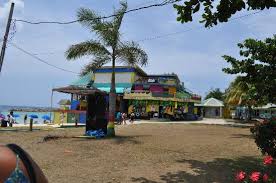
I swam across the bay checking out the beach scene and then decided to walk around the park and see the sights. Young women were giving massages to people laying in the sand while others braided customer's hair into long dreadlocks. Behind the main building, where the craft shops were located, I came upon a crowd of folks oohing and aahing as a fire spitter walked on broken glass.
Barbara came up to me and said, “What you t’ink?”

“It’s like a strange dream,” I replied with a laugh.
“Da truth,” agreed Barbara with a big smile.
Perhaps the oddest thing about the whole scene was that I never smelled any weed.
I went for a final swim, knowing it would be my last frolic in the Caribbean waters because the rest of our cruise would be aboard the ship, and then we packed up our gear and headed for the shack porch bar where Larry was nursing a Red Strip and smiling like Buddha. He was transfixed on the three musicians who were as odd as the rest of the place. An ancient and nearly toothless fellow in a red Jamaican shirt strummed the world’s oldest banjo, playing it like a bass and singing with an easy grace, while another old geezer played a beat-up guitar as a young kid finger-picked a strum drum on the ground. We dropped some money in their tip jar and joined them for a roots tune. It was huge grins. And amazingly enough, they even had cd’s to sell. We would have loved to hang out longer – supposedly the place really went into orbit at night – but Barbara was waiting to take us back to the ship.
Back at the dock, we said a sad farewell to Barbara, promising to tell all of our friends to look her up on her website at: www.funfilledjamaica.com
We still had about an hour to kill before we had to get back on the ship, and even though we were tired after an incredibly wild day of sight seeing fun, we decided to check out the shantytown market near the terminal. We quickly realized this was a bad decision. It was the end of the day and the onslaught of people trying to sell us all manner of tourist junk was unreal – incredibly aggressive – and the whole process was demeaning for all parties involved.


One tall guy latched onto us like a smiling lamprey and assumed the role of impromptu tour guide, following us through the market and even into the historic business square, jabbering about the buildings and the food, and pointing to the spot where the rebel Samuel Sharp was hanged by the Brits before the turn of the last century. When we got to the obligatory water fountain in the center of the business district we had reached our limit and told our unwanted friend to take a hike.



The people of Falmouth were promised that the new cruise terminal was going to usher in tourists with fat wallets, just itching to buy the local crafts, but the promises have proven to be a bit hollow. And you could almost feel the distrust and hostility as yet another day in Cruiseland was winding down and the last of the boat people were about to set sail without adequately spreading the wealth.
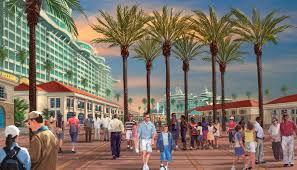
As we walked back to the ship through the security gate and passed the same items that we had just seen in the market, now nicely displayed in the tidy Georgian shops, I suddenly felt disoriented and in need of a drink.
Back on board, I headed for the pool bar. This time, I ordered a beer instead of a boat drink and stared off into the green jungle void beyond Falmouth, lost in my muddled thoughts.
 The Captain suddenly broke my conflicted reflections with an announcement over the intercom. He informed us that two people had missed the boat, and he said with a little laugh that our departing ship would make an interesting photo taken from the dock for the two tardy travelers. It was a joke. We were going to wait a few minutes for them to join us. No one would be left behind on this journey.
The Captain suddenly broke my conflicted reflections with an announcement over the intercom. He informed us that two people had missed the boat, and he said with a little laugh that our departing ship would make an interesting photo taken from the dock for the two tardy travelers. It was a joke. We were going to wait a few minutes for them to join us. No one would be left behind on this journey.
The people of Jamaica have always struggled to break the bonds of physical and mental slavery. Bob Marley is just Samuel Sharp with a guitar, the throbbing bass line of poverty always right there beneath the lyrics, promising much tribulation and a brighter day. The prophecy rings true. Falmouth is better off because of Royal Caribbean, of that I have no doubt.
But, as Bob Marley once sang:
 "Cost of livin' gets so high,
"Cost of livin' gets so high,
Rich and poor they start to cry:
Now the weak must get strong;
They say, "Oh, what a tribulation!"
Them belly full, but we hungry;
A hungry mob is a angry mob.
A rain is fall, but the dirt it tough;
A pot is cook, but the food no 'nough."
I had been to Jamaica several times before, but never by cruise ship, and never to Falmouth.
centuries. Europeans, mostly Englishmen, made vast sums of money growing sugar cane and turning it into rum, on the backs of an army of slaves. Some of the richest men on the planet called Falmouth home and it had a public water system before New York City. Its Georgian-style mansions were known far and wide. And many of these Great Houses are still standing in all of their former glory.
The British army spent a month restoring order and rounding up the slave leaders, including Sharpe, who were publicly hanged as a lesson to others. But the real lesson was being learned back in England, where the public was sickened by the savage stories coming out of Jamaica and the rest of the West Indies.

Slavery was outlawed in 1840, the slaves freed, and the bottom soon dropped out the Jamaican sugar cane empire. And with it went Falmouth.
Until 2007, when Royal Caribbean announced that it was going to build a new terminal for its ships at Falmouth.
Doreen Hemlock, a business reporter who visited Falmouth during its initial stage, offered the following analysis of the proposal.
“Royal Caribbean worked with an Orlando design company, to reflect the character of the town in its new port area. Buildings were designed as a modern extension of the town, on the same grid, in a similar Georgian architectural style. The cruise line also is working with the town to support its efforts at historic preservation.”
For what happened next, we need only look at how gambling has played out on American Indian reservations. The traditionalists warn that it will spell the end of their culture and the natives will be swallowed by creeping capitalism. The moneyed interests dangle the promise of countless wealth to a downtrodden people. Ultimately, the Jamaican government approved the project, the RC terminal opened in 2011 to much hoopla, and the verdict is still out on whether the gambit has paid off.
As I stared down from my walking track perch on Deck 11 at the bustling scene below, the vendors setting up shop wearing brightly-colored puffy shirts and calico dresses, it looked almost like a movie set. Behind the terminal sat the town, its historic houses and churches shining brightly in the morning sun.
But as with all fairy tales, there was a dark side where the shanty town market clung to the eastern edge of Falmouth like an ugly wound. More on this a bit later.
After breakfast we loaded our day packs and navigated the ever changing departure maze on the ship. It seemed like every day the departure gangway was located in a slightly different location. And some decks have bulkheads that block your path. On the Navigator, we needed to go down to Deck 5, walk across the Royal Promenade, take an elevator to Deck 2, and then look for the exit. As we grabbed some fruit at the snack bar the Captain was delivering his daily message over the ship intercom. He told us that we had from 8-5 to see the sights, to enjoy our brief stay on the island of Jamaica, and to steer clear of anyone trying to sell us weed.
Speaking of McDonalds, it turns out they aren't very popular with the locals who don't go in much for burgers. They prefer chicken and the Colonel’s KFC’s are everywhere and quite popular.
Once again, we had a plan. Find the Taxi Station at the end of the sprawling terminal and catch a taxi or bus to Doctor's Cave Beach beach, about 20 miles to the west, and spend a few hours swimming and snorkeling. Dave’s Cave is listed in all the tour guides as a must see. Then we would hop a ride or walk back to the Hip Strip at Montego Bay for some Reggae gear shopping before heading back to Falmouth for a history lesson.
As usual, our plans went awry when we started talking to the local guides. In this case, a very nice young man pulled up in a large electric golf cart and took us to the end of the terminal and explained that he could get us great tour of the north side of the island.
The guides are all licensed by the Jamaican Tourist Bureau, so you really can’t get ripped off. But
 choosing a tour from a stranger is always a crap shoot. Some work out great and others leave you less than satisfied. In this case, we ended up paying $35 per person for an all day van tour with BARBARA who drove for Maxi Tours.
choosing a tour from a stranger is always a crap shoot. Some work out great and others leave you less than satisfied. In this case, we ended up paying $35 per person for an all day van tour with BARBARA who drove for Maxi Tours.Barbara was a sassy Jamaican who was both funny and no-nonsense at the same time. She spoke with a sweet Jamaican patois that sounded almost musical. And she knew the north side of the island like the back of her hand. She lives in Montego Bay and takes a public bus to Falmouth, leads the daily tour, and then catches the bus home.
If you want a tour that you will long remember, shoot her an e-mail at:
barbara.panthan@yahoo.com
You will be glad you did.
We headed west along the coast toward Montego Bay and Barbara pointed out interesting sites along the way.
“See that school over there? Dat's where the track star Usain Bolt went to grade school.”
We inquired about the cost of land.
“You can buy a plot of undeveloped ground for around $3,000 US or $300,000 Jamaican. And there definitely is undeveloped land for sale.”
“The Spanish are building lots of hotels,” she remarked as we passed a posh Mediterranean villa complex along a stretch of rocky coastline.
Inna enquired if there was a national dish.
Barbara said that indeed there was. “A native fruit called Akee and cod.”
Barbara gave us a little lesson in politics at my request.
Jamaica has been a sovereign nation since 1962 and celebrates its Independence Day on August 6. There are 14 parishes with 4 council members from Jamaica Labor Party and People's National Party representing each parish. Jamaica currently has a lady Prime Minister from the PNP which tends to be more pro-people – hence the name.
The one thing you notice right away is that every house, not matter the size or cost, is constructed solidly out of rebar and concrete to withstand hurricane winds and rain. And almost every house is fenced in. We were left to solve that riddle on our own.
There were large cleanup crews picking up trash along the dual highway that was built for the World Cricket Cup in 2007. It seemed to be a major source of employment.
Gas is expensive in Jamaica. And the price is pegged to the American economy, which is a double-edge sword. As the U.S. economy weakens, gas prices drop, but then, so do the tourist dollars.
Our first stop was the historic Rose Hall Plantation, the infamous home of Annie Palmer, the White Witch Voodoo Queen, whose ghost supposedly haunts the solitary Georgian mansion that sits atop a hillside overlooking the sea.
The story of Rose Hall is one of those tales that transcends history and is shrouded in mystery. Some say it’s total crap and others say they have witnessed Annie’s ghost.
Barbara drove us up the winding drive to the plantation where we paid our $15 entrance fee and were met by a young Jamaican girl in period costume, who led us around the mansion and told us the rest of the story.
In 1750, George Ash, an Englishman with deep pockets purchased Rose Hall, encompassing 6000 acres of volcanic-rich soils tended by 2000 slaves.
Ash later sold the estate to John Palmer, another wealthy Englishman, who soon married Annie, whose parents had emigrated to Haiti and then died of yellow fever when she a small child. Annie was raised by a Haitian nanny who taught her witchcraft and voodoo.
After a brief period of marital bliss, Mr. Palmer died under mysterious circumstances – perhaps yellow fever –some said at the hands of Annie. And this pattern was to repeat itself two more times.
After murdering her last husband, she instructed several of her slaves to haul the shrouded body to the ocean via a network of secret escape tunnels running under the property. After dumping the corpse in the sea, the litter bearers were murdered, hence the old adage, “Dead men tell no tales.”
And since that day, Annie’s ghost has haunted the mansion.
But there are some pretty creepy items there too.
Bear traps were found down in the dungeon. But there were never any bears on Jamaica. Legend has it that Annie used them on her slaves.
Several cast members of the hit TV show “Love Boat”claim that when they stayed at the mansion, they woke up one morning to the sound of a baby crying, and when they got up to see where the noise was coming from, it suddenly stopped. Upon returning to their room, they found their coffee cups smashed on the floor.
 Over the years, several people who have taken pictures in Annie’s bedroom were shocked to see her murky image in the mirror hanging by her bed.
Over the years, several people who have taken pictures in Annie’s bedroom were shocked to see her murky image in the mirror hanging by her bed.A few years ago, a group of international mystics – whatever the hell that means – visited Rose Hall in order to prove whether Annie's ghost really existed. They focused their attention on the special grave that Takoo had built in order to imprison her spirit. When they tried to channel her ghost, they got nothing. Apparently Takoo and his conspirators had botched the grave, allowing her spirit to escape the tomb. So, maybe she’s real, and maybe she’s not. Who knows?
 But if history is any judge then the following fact is enlightening. During the Christmas rebellion of 1832, 70 of the great houses on Jamaica were burned and only the kind masters' houses were spared. But Rose Hall was not burned out of fear of Annie's ghost.
But if history is any judge then the following fact is enlightening. During the Christmas rebellion of 1832, 70 of the great houses on Jamaica were burned and only the kind masters' houses were spared. But Rose Hall was not burned out of fear of Annie's ghost.Today, Rose Hall is owned by the Rawlings family from Wilmington, Delaware, and they allow daily tours and are slowly restoring the estate.
We pushed on to Montego Bay, a tip top destination brimming with fancy estates, world-class resorts, golf courses, and shopping malls. We drove by an especially nice golf course called the Half Moon Club where golfers and their caddies strolled manicured fairways as if roaming the grounds of their private estate.
The fanciest of the fanciest neighborhoods is Iron Stone. Barbara took us for a drive around the Iron Stone perimeter and informed us that it is home to many movie stars like Eddie Murphy and Sylvester Stallone. And Prince Charles recently visited friends there touring the Bob Marley Center in 2011.
We continued on toward Montego Bay and soon came to a funky street filled with hippie-dippy shops overflowing with EVERYTHING reggae. This is the Hip Strip.
Barbara found a parking space in front of a gaudy shop and we bailed out of the van. The inside of the crowded store was crammed with all sorts of trinkets decorated in the Jamaican colors of yellow, green and black. Larry and I were looking for a Bob Marley beach towel and they had a selection of about twenty or more. I also picked up a fiery red cotton Hawaiian shirt – except it was Jamaican.
On the way back into Montego Bay Barbara stopped at the Overton Plaza and led us into a small take-out restaurant where she bought us all a local delicacy known as a Jamaican Patty – a flaky pastry filled with spiced beef. They were delicious! We tried to pay her, but she insisted that it was her treat. We couldn’t believe how gracious it was for a lady who really didn’t know us from Adam, and who clearly was struggling to make ends meet, to buy us all lunch.
“Now I take you to my favorite beach,” said Barbara as she finished her patty.
“Dave’s Cave?” I suggested. I knew it was somewhere nearby.
“That’s where all the tourists go,” chuckled Barbara. “I take you to the beach where all de locals go. Where I take my family.”
The Aqua Sol Water Theme Park was rockin’ when we exited Barbara’s van. As Bob Marleys “Get Up, Stand Up” blared from a large amplifier, a young Rasta DJ hopped off a small stage by the blue and yellow restaurant-bar and greeted us with a happy-glazed smile.
We gave him our particulars and he jogged back to the stage and announced to all the patrons. “Let’s welcome Steve and Inna from Maryland, and Larry and Teri from Florida.”
The beach was shaded from the road by large palms which framed the shallow half moon bay where local families relaxed in the sun to the pulsing rhythm of non-stop reggae music.
We headed for the far side of the beach where there were two large sea grape trees and some cool shade. Everyone we passed gave us a welcoming wave.
Larry went over to the bar to get a beer and check out three guys playing homegrown reggae while the rest of us went swimming.
I swam across the bay checking out the beach scene and then decided to walk around the park and see the sights. Young women were giving massages to people laying in the sand while others braided customer's hair into long dreadlocks. Behind the main building, where the craft shops were located, I came upon a crowd of folks oohing and aahing as a fire spitter walked on broken glass.
Barbara came up to me and said, “What you t’ink?”
“It’s like a strange dream,” I replied with a laugh.
“Da truth,” agreed Barbara with a big smile.
Perhaps the oddest thing about the whole scene was that I never smelled any weed.
I went for a final swim, knowing it would be my last frolic in the Caribbean waters because the rest of our cruise would be aboard the ship, and then we packed up our gear and headed for the shack porch bar where Larry was nursing a Red Strip and smiling like Buddha. He was transfixed on the three musicians who were as odd as the rest of the place. An ancient and nearly toothless fellow in a red Jamaican shirt strummed the world’s oldest banjo, playing it like a bass and singing with an easy grace, while another old geezer played a beat-up guitar as a young kid finger-picked a strum drum on the ground. We dropped some money in their tip jar and joined them for a roots tune. It was huge grins. And amazingly enough, they even had cd’s to sell. We would have loved to hang out longer – supposedly the place really went into orbit at night – but Barbara was waiting to take us back to the ship.
Back at the dock, we said a sad farewell to Barbara, promising to tell all of our friends to look her up on her website at: www.funfilledjamaica.com
We still had about an hour to kill before we had to get back on the ship, and even though we were tired after an incredibly wild day of sight seeing fun, we decided to check out the shantytown market near the terminal. We quickly realized this was a bad decision. It was the end of the day and the onslaught of people trying to sell us all manner of tourist junk was unreal – incredibly aggressive – and the whole process was demeaning for all parties involved.
One tall guy latched onto us like a smiling lamprey and assumed the role of impromptu tour guide, following us through the market and even into the historic business square, jabbering about the buildings and the food, and pointing to the spot where the rebel Samuel Sharp was hanged by the Brits before the turn of the last century. When we got to the obligatory water fountain in the center of the business district we had reached our limit and told our unwanted friend to take a hike.

The people of Falmouth were promised that the new cruise terminal was going to usher in tourists with fat wallets, just itching to buy the local crafts, but the promises have proven to be a bit hollow. And you could almost feel the distrust and hostility as yet another day in Cruiseland was winding down and the last of the boat people were about to set sail without adequately spreading the wealth.
As we walked back to the ship through the security gate and passed the same items that we had just seen in the market, now nicely displayed in the tidy Georgian shops, I suddenly felt disoriented and in need of a drink.
Back on board, I headed for the pool bar. This time, I ordered a beer instead of a boat drink and stared off into the green jungle void beyond Falmouth, lost in my muddled thoughts.
The people of Jamaica have always struggled to break the bonds of physical and mental slavery. Bob Marley is just Samuel Sharp with a guitar, the throbbing bass line of poverty always right there beneath the lyrics, promising much tribulation and a brighter day. The prophecy rings true. Falmouth is better off because of Royal Caribbean, of that I have no doubt.
But, as Bob Marley once sang:
Rich and poor they start to cry:
Now the weak must get strong;
They say, "Oh, what a tribulation!"
Them belly full, but we hungry;
A hungry mob is a angry mob.
A rain is fall, but the dirt it tough;
A pot is cook, but the food no 'nough."
Dem Want more …
Tip of the Day: The cost of ordering a bottle of wine in the dining room is about the same as your average restaurant and anything left over will be saved by your waiter for the next night. So it's a very reasonable deal.
Tip of the Day: The cost of ordering a bottle of wine in the dining room is about the same as your average restaurant and anything left over will be saved by your waiter for the next night. So it's a very reasonable deal.







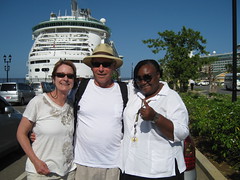
This comment has been removed by the author.
ReplyDeleteGreat article. Thanks for all the tips on traveling in Jamaica. I am looking forward to my cruise.
ReplyDelete